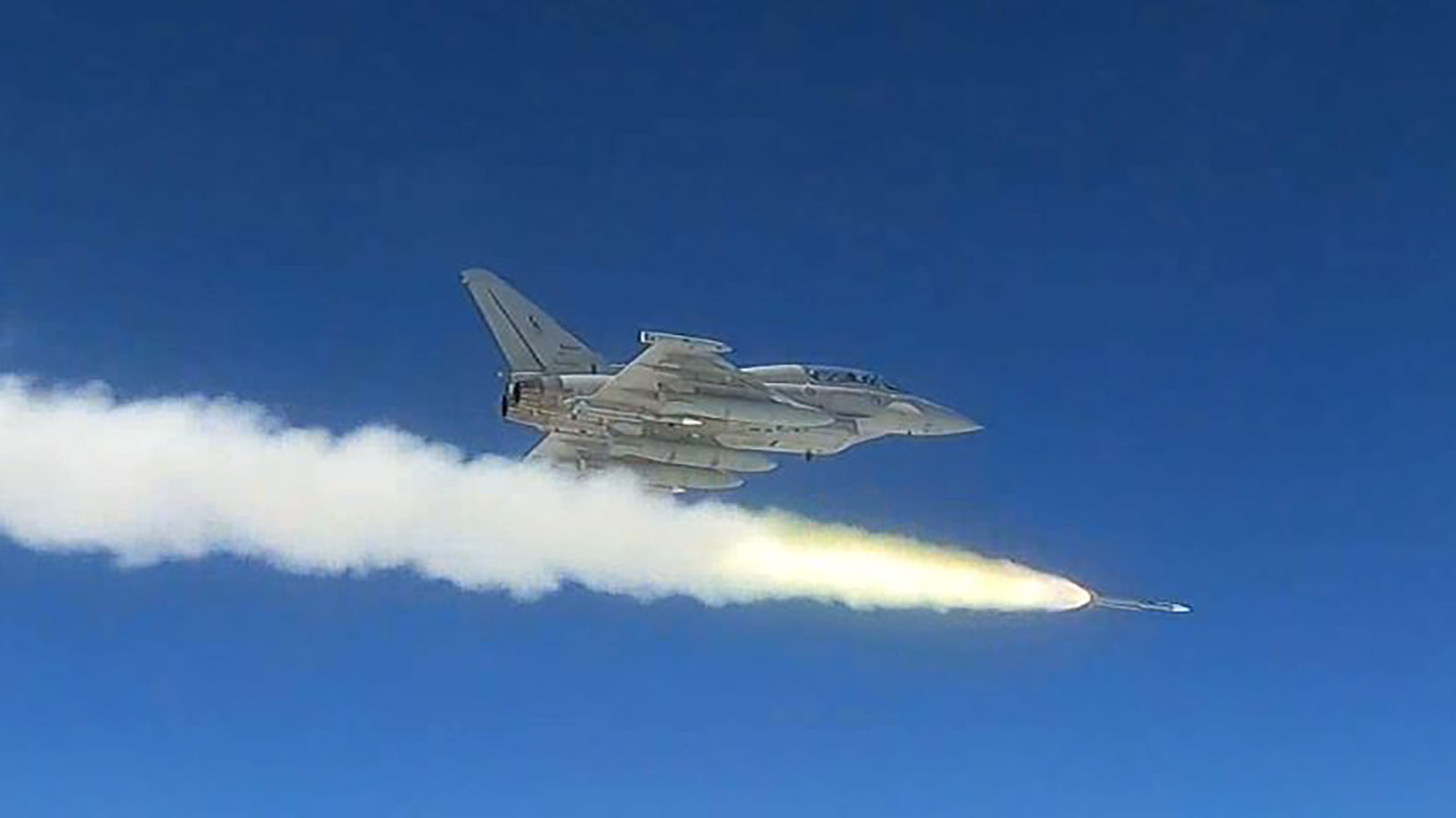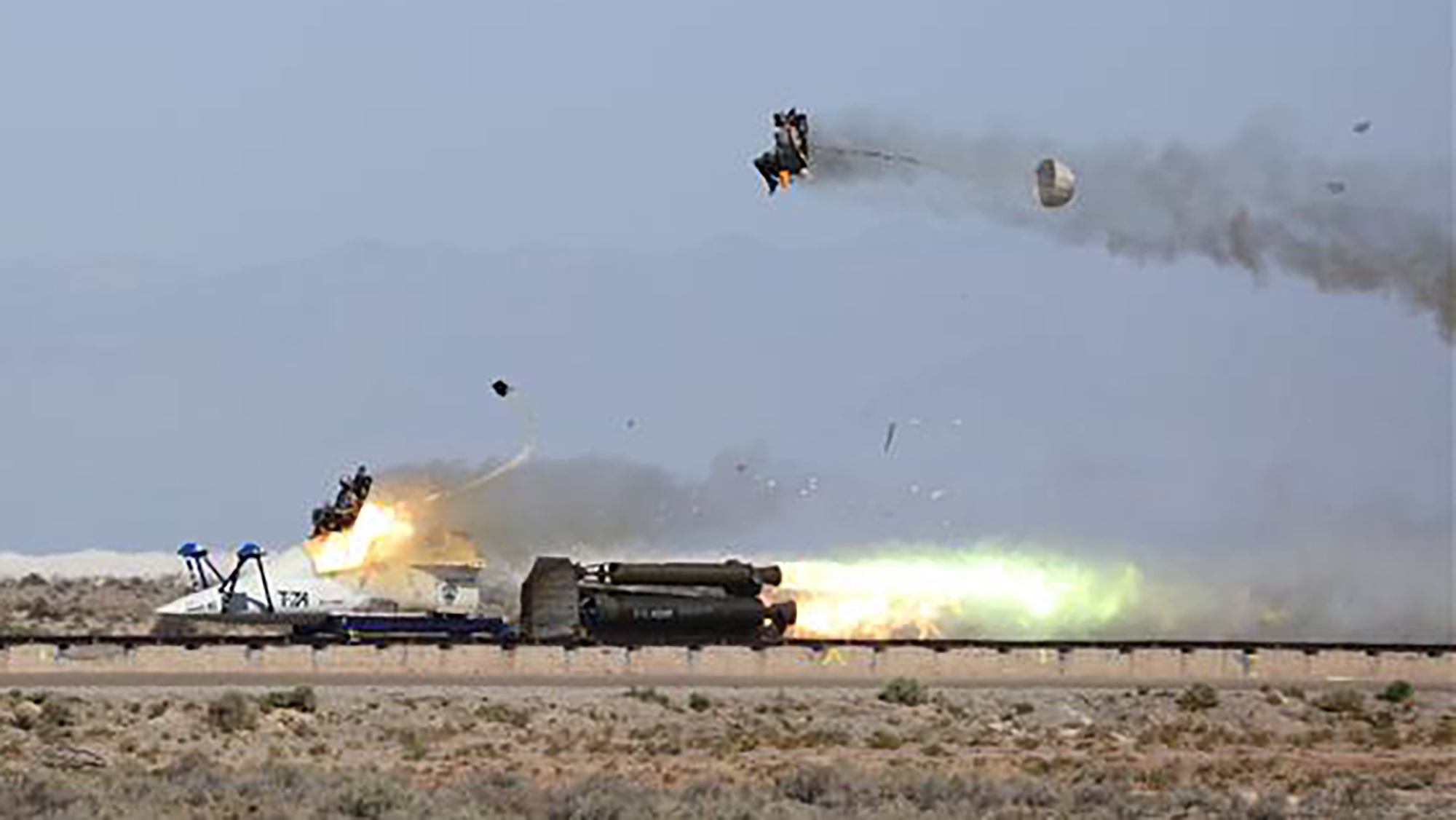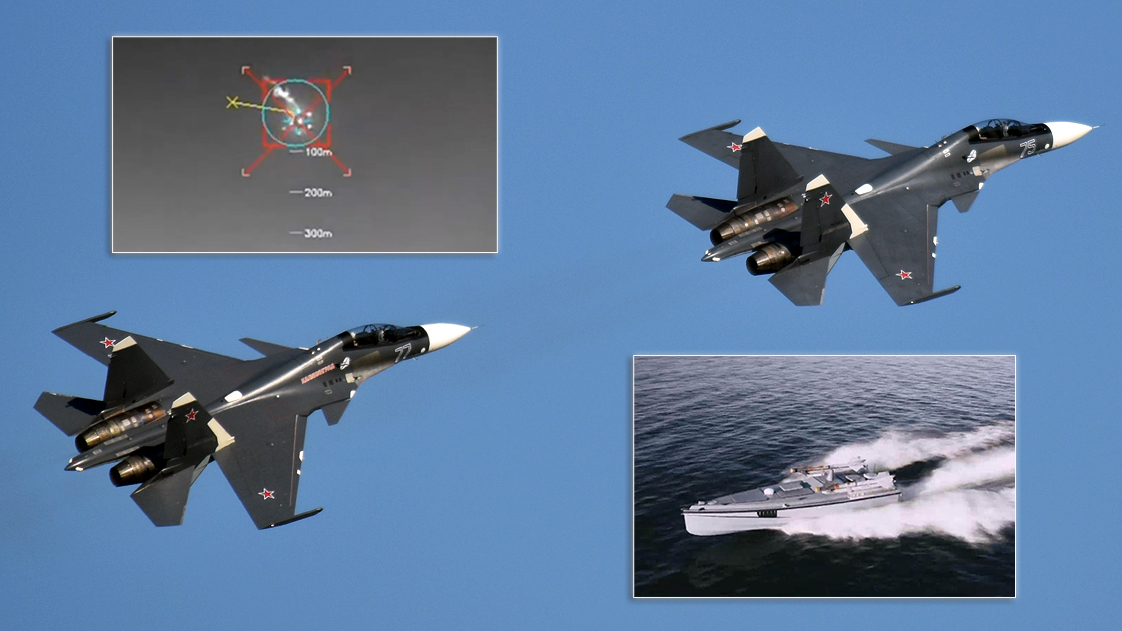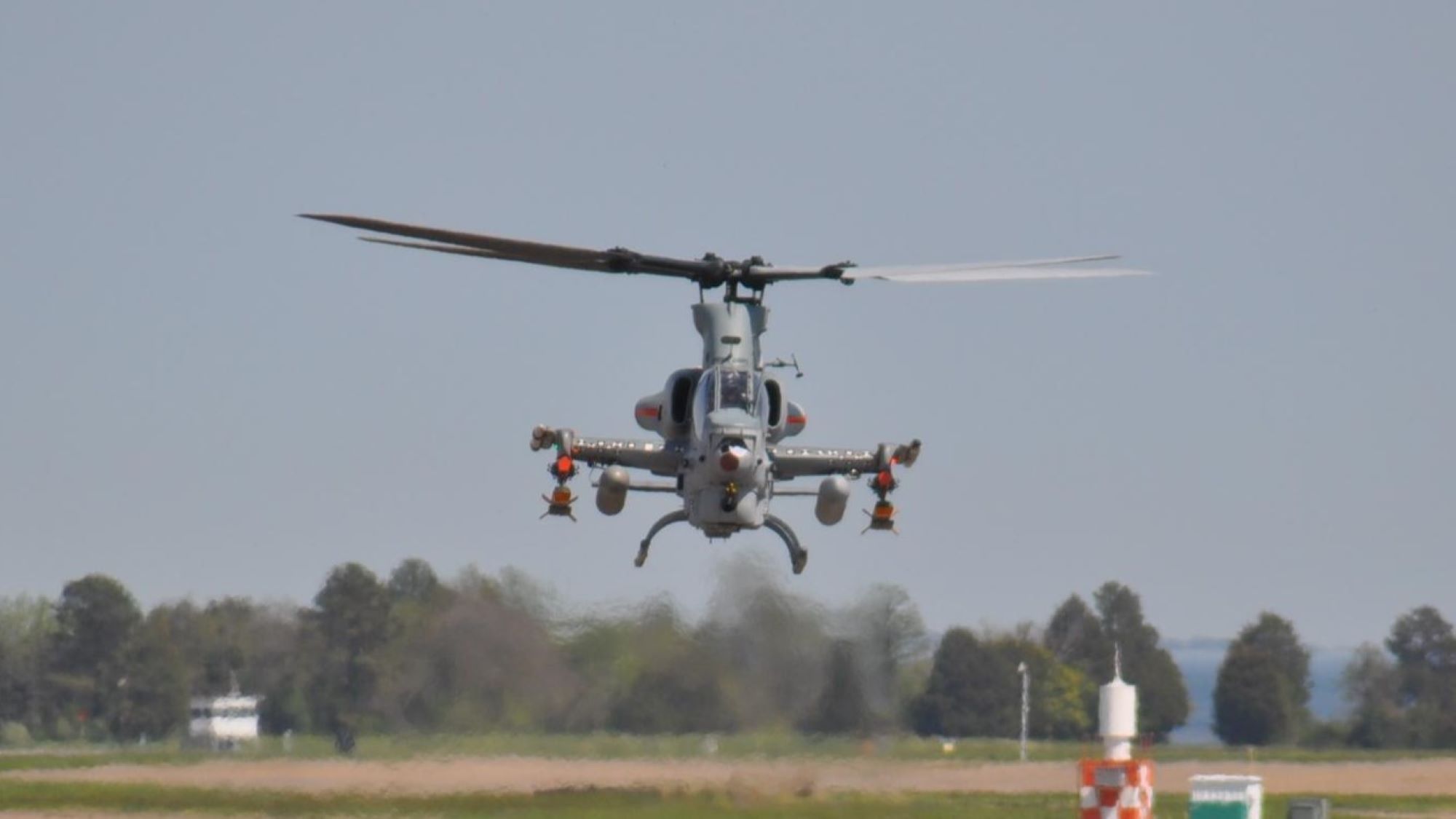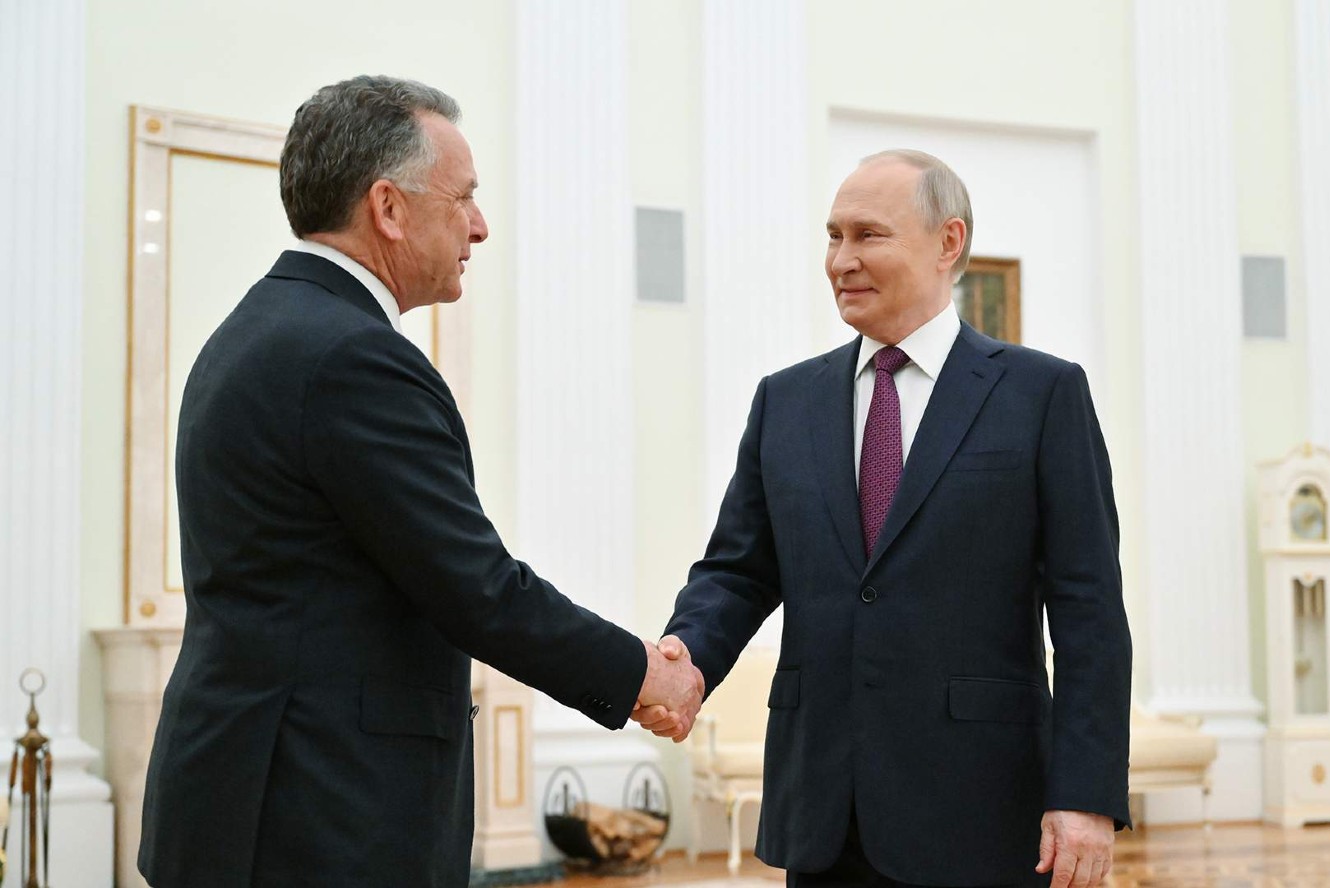The D Brief: Budget ‘gimmicks’; Drones down fighter jets; China’s counter-drone efforts; Army’s network experiment; And a bit more.
White House’s ‘trillion-dollar’ defense budget: The Trump administration’s $1.01 trillion defense-spending proposal for fiscal 2026 wouldn’t increase the Defense Department budget, and would lead to an inevitable decrease in defense spending the following year, budgetary experts said. Here’s why. According to documents posted to the White House website on Friday, the administration wants $892.6 billion for the base defense budget, which includes funds for DOD and the Energy Department’s nuclear weapons work, with $113 billion to come through the reconciliation budget bill now working its way through Congress. This drew swift criticism from GOP senators, including Senate Armed Services Committee Chairman Roger Wicker, R-Miss., who noted that $892.6 billion “is a cut in real terms,” that is, after adjusting for inflation. Sen. Mitch McConnell, R.-Ky., added that the proposal relies on “gimmicks.” Why do they care where the money comes from? Because the rules adopted in the reconciliation bill mean the trillion-dollar topline is unsustainable. Former Pentagon comptroller John Conger explains: “Keep in mind that the limits of what they can actually do is already in the budget resolution. That’s essentially the new [Budget Control Act,] which will determine upcoming appropriations for the next several years.” The bill provides $150 billion for defense over the next five years, of which the administration aims to use $113 billion in 2026. That leaves $37 billion for the next four years. But couldn’t they just boost the DOD budget to suit? No, because 2027 defense spending (what budget wonks call 050) is also capped by the budget resolution, at $923 billion. “Bottom line is that if this is really a 13% increase, then you will have an inevitable decrease in FY27,” Conger wrote in an email to Defense One. “DoD will essentially be forced to operate as if the increase is temporary, which means they won’t be able to fix recurring risks or shortfalls. Many programs across the enterprise are going to struggle to keep up with inflation.” See more coverage at Defense One, Defense News, and Breaking Defense. Related reading: “The World’s Top Jet Fighter [F-35] Is About to Get More Expensive,” the Wall Street Journal reported Monday citing a supply chain that “could be challenged by the Trump administration’s sweeping trade policies.” Welcome to this Monday edition of The D Brief, a newsletter dedicated to developments affecting the future of U.S. national security, brought to you by Ben Watson with Bradley Peniston. Share your tips and feedback here. And if you’re not already subscribed, you can do that here. On this day in 1821, Napoleon Bonaparte died in exile on the South Atlantic island of Saint Helena. Around the Defense Department Project Convergence update: The latest iteration of the Army’s Project Convergence imagined that the National Training Center at Fort Irwin, Calif., had been captured by an enemy force, with the Army, Navy, Marine Corps, Air Force, and Space Force joining to take it back, Defense One’s Meghann Myers reported Friday. Project Convergence-Capstone 5, which took place over March and April, was the first time the Army’s main network-warfare development effort had focused all its forces on a single scenario, Lt. Gen. David Hodne, deputy commander of Army Futures Command, told reporters on Friday. To coordinate this mission, across not only Army units but across services and with international partners, the service has been working to string together all of its communications and data-sharing gear into one display that every command center can see simultaneously. The exercise also featured a second joint mission in the Indo-Pacific: networking an operation from Hawaii to Japan to the Philippines, French Polynesia and Australia and transmitting data to British, French, and Japanese partners. “PC-C5 showed us that all the data that we're going after all the systems we're testing and learning, we're going down the right path,” said Lt. Gen. J.B. Vowell, U.S. Army Pacific’s deputy commander. “We’ve just got to go faster.” Read on, here. Additional reading: “Army to cancel planned Robotic Combat Vehicle award, pause howitzer competition,” Breaking Defense reported Friday; “Army Will Seek Right to Repair Clauses in All Its Contracts,” 404 Media reported Thursday; “Marines say they’re ‘leading the way’ in battlefield autonomy,” Defense One’s Lauren C. Williams reported from last week’s Modern Day Marine conference; “Army Black Hawk helicopter forces two jetliners to abort landings at DCA,” NPR reported Saturday; And “Trump blasts Mexico's Sheinbaum for rejecting offer to send US troops into Mexico to fight cartels,” the Associated Press reported Sunday. Considering China Indo-PACOM’s Paparo says China is outpacing the U.S. when it comes to weapons production. The discrepancy isn’t enough to put U.S. defense of Taiwan at risk just yet, Adm. Samuel Paparo told an audience

Here’s why. According to documents posted to the White House website on Friday, the administration wants $892.6 billion for the base defense budget, which includes funds for DOD and the Energy Department’s nuclear weapons work, with $113 billion to come through the reconciliation budget bill now working its way through Congress.
This drew swift criticism from GOP senators, including Senate Armed Services Committee Chairman Roger Wicker, R-Miss., who noted that $892.6 billion “is a cut in real terms,” that is, after adjusting for inflation. Sen. Mitch McConnell, R.-Ky., added that the proposal relies on “gimmicks.”
Why do they care where the money comes from? Because the rules adopted in the reconciliation bill mean the trillion-dollar topline is unsustainable. Former Pentagon comptroller John Conger explains: “Keep in mind that the limits of what they can actually do is already in the budget resolution. That’s essentially the new [Budget Control Act,] which will determine upcoming appropriations for the next several years.” The bill provides $150 billion for defense over the next five years, of which the administration aims to use $113 billion in 2026. That leaves $37 billion for the next four years.
But couldn’t they just boost the DOD budget to suit? No, because 2027 defense spending (what budget wonks call 050) is also capped by the budget resolution, at $923 billion.
“Bottom line is that if this is really a 13% increase, then you will have an inevitable decrease in FY27,” Conger wrote in an email to Defense One. “DoD will essentially be forced to operate as if the increase is temporary, which means they won’t be able to fix recurring risks or shortfalls. Many programs across the enterprise are going to struggle to keep up with inflation.”
See more coverage at Defense One, Defense News, and Breaking Defense.
Related reading: “The World’s Top Jet Fighter [F-35] Is About to Get More Expensive,” the Wall Street Journal reported Monday citing a supply chain that “could be challenged by the Trump administration’s sweeping trade policies.”
Welcome to this Monday edition of The D Brief, a newsletter dedicated to developments affecting the future of U.S. national security, brought to you by Ben Watson with Bradley Peniston. Share your tips and feedback here. And if you’re not already subscribed, you can do that here. On this day in 1821, Napoleon Bonaparte died in exile on the South Atlantic island of Saint Helena.
Around the Defense Department
Project Convergence update: The latest iteration of the Army’s Project Convergence imagined that the National Training Center at Fort Irwin, Calif., had been captured by an enemy force, with the Army, Navy, Marine Corps, Air Force, and Space Force joining to take it back, Defense One’s Meghann Myers reported Friday.
Project Convergence-Capstone 5, which took place over March and April, was the first time the Army’s main network-warfare development effort had focused all its forces on a single scenario, Lt. Gen. David Hodne, deputy commander of Army Futures Command, told reporters on Friday. To coordinate this mission, across not only Army units but across services and with international partners, the service has been working to string together all of its communications and data-sharing gear into one display that every command center can see simultaneously.
The exercise also featured a second joint mission in the Indo-Pacific: networking an operation from Hawaii to Japan to the Philippines, French Polynesia and Australia and transmitting data to British, French, and Japanese partners. “PC-C5 showed us that all the data that we're going after all the systems we're testing and learning, we're going down the right path,” said Lt. Gen. J.B. Vowell, U.S. Army Pacific’s deputy commander. “We’ve just got to go faster.” Read on, here.
Additional reading:
- “Army to cancel planned Robotic Combat Vehicle award, pause howitzer competition,” Breaking Defense reported Friday;
- “Army Will Seek Right to Repair Clauses in All Its Contracts,” 404 Media reported Thursday;
- “Marines say they’re ‘leading the way’ in battlefield autonomy,” Defense One’s Lauren C. Williams reported from last week’s Modern Day Marine conference;
- “Army Black Hawk helicopter forces two jetliners to abort landings at DCA,” NPR reported Saturday;
- And “Trump blasts Mexico's Sheinbaum for rejecting offer to send US troops into Mexico to fight cartels,” the Associated Press reported Sunday.
Considering China
Indo-PACOM’s Paparo says China is outpacing the U.S. when it comes to weapons production. The discrepancy isn’t enough to put U.S. defense of Taiwan at risk just yet, Adm. Samuel Paparo told an audience Friday in Arizona. But Paparo repeated some previously-known statistics—each year China produces two submarines for every 1.4 made in the U.S., and six combatant warships compared with the 1.8 stateside, e.g.—to sound the alarm bell for congress ahead of budget negotiations, the Financial Times reported this weekend.
Not just Beijing’s defense industry: Relatedly, “The rates of change on the depth and breadth of [China’s military] exercises is the one non-linear effect that I’ve seen in the last year that wakes me up at night or keeps me up at night,” Paparo said. Read more behind the paywall, here.
Also developing: China is upgrading its counter-drone capabilities aggressively, Tye Graham and Peter W. Singer warn in the latest edition of The China Intelligence for Defense One.
Recent demonstrations featuring high-power microwave systems and AI-assisted autonomous interceptors reveal an evolving strategy designed to neutralize mass drone swarms and first-person-view attack drones, the two researchers write.
But that’s not all: China now appears to be adopting a multi-layered defense approach that integrates electronic warfare, directed-energy weapons, and AI-driven interception systems, combining both kinetic and non-kinetic solutions.
Also notable: China’s market “now features more than 3,000 manufacturers producing anti-drone equipment in some form…while recent procurement data reveal a dramatic rise in the acquisition of counter-UAV systems,” Graham and Singer warn. “In 2024 alone, government authorities issued 205 procurement notices related to counter-drone technology—a significant leap from 122 in 2023 and 87 in 2022. This surge reflects Beijing’s heightened concern over low-altitude security and the need for robust drone mitigation.” Continue reading, here.
Top NSC official wants to normalize offensive hacking. In his first major discussion as the top cybersecurity official in the National Security Council, Alexei Bulazel told an audience of cybersecurity practitioners that the U.S. “could respond in-kind” to cyberattacks from China and other adversaries that have targeted various critical infrastructure systems across the nation, Nextgov reported Friday. “You need to find some way to communicate this is not acceptable,” he said.
In terms of spyware, Bulazel also flagged that the U.S. recently signed onto the internal Pall Mall pact that commits to curb global spyware abuses, but noted that nation-states are still likely to use spyware as a tool for intelligence collection. Read on, here.
By the way: The Signal clone app that the Trump administration uses was hacked, and it was reportedly quite easy to do, 404 Media reported Sunday.
Additional reading:
- “Trump plans major downsizing at U.S. spy agencies,” the Washington Post reported Friday;
- “With militaries upgraded, risks multiply in any potential India-Pakistan conflict,” Reuters reported Monday;
- “Kim Jong Un’s Latest Gift to Russia Is Migrant Workers,” the Wall Street Journal reported Monday.
Ukraine
Kyiv says it achieved a new first in naval warfare: Sea drones shot down two Russian jets using U.S.-made Sidewinder missiles, The War Zone reported Saturday after speaking with Ukrainian intelligence chief Lt. Gen. Kyrylo Budanov. “This marks the first time fighter airecraft [sic] have been downed by drone boats and the first use of the AIM-9 from a drone boat for a kill,” TWZ reports.
Ukraine released a video allegedly demonstrating the first shootdown, which occurred Friday over the Black Sea. Learn more about the drone boats via NavalNews, here.
And ICYMI: “Russia is reportedly expanding its military infrastructure along its border with Finland and stockpiling new tanks, likely in preparation for future aggression against NATO,” the Wall Street Journal reported last week.
Developing: The U.S. is reportedly planning to move an older Patriot air defense system from Israel to Ukraine after it is refurbished, the New York Times reported Sunday.
Also notable: “While Ukraine is still receiving weapons authorized under Mr. Biden, those supplies are expected to end this summer,” the Times reports.
Additional reading: “F-16s Pulled From U.S. Boneyard Are Being Delivered To Ukraine For Spare Parts,” The War Zone reported last week. ]]>

























































































